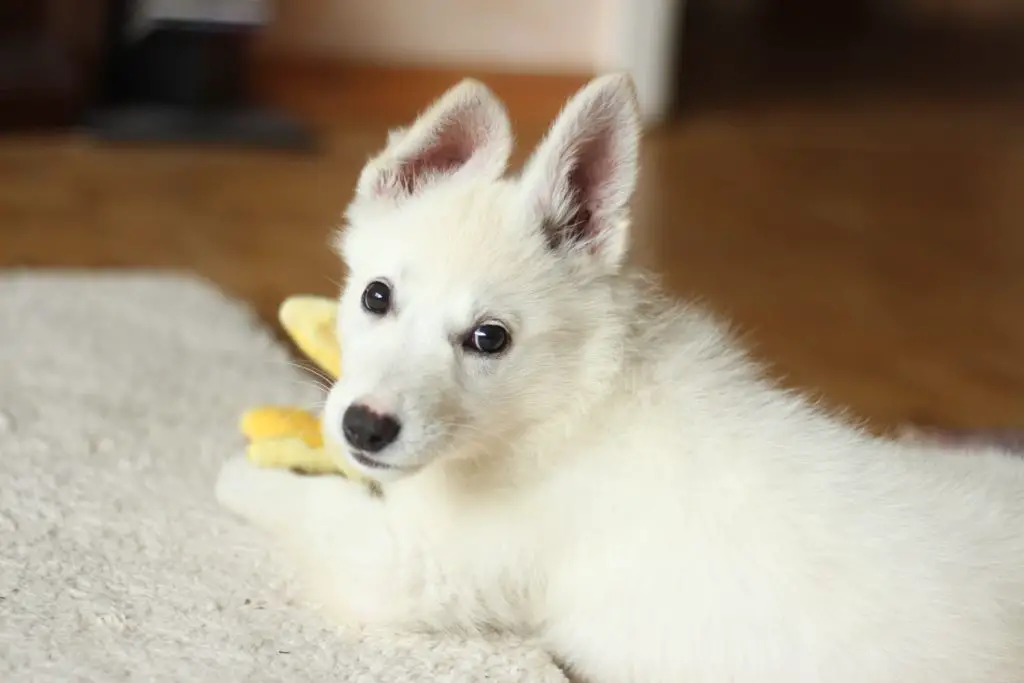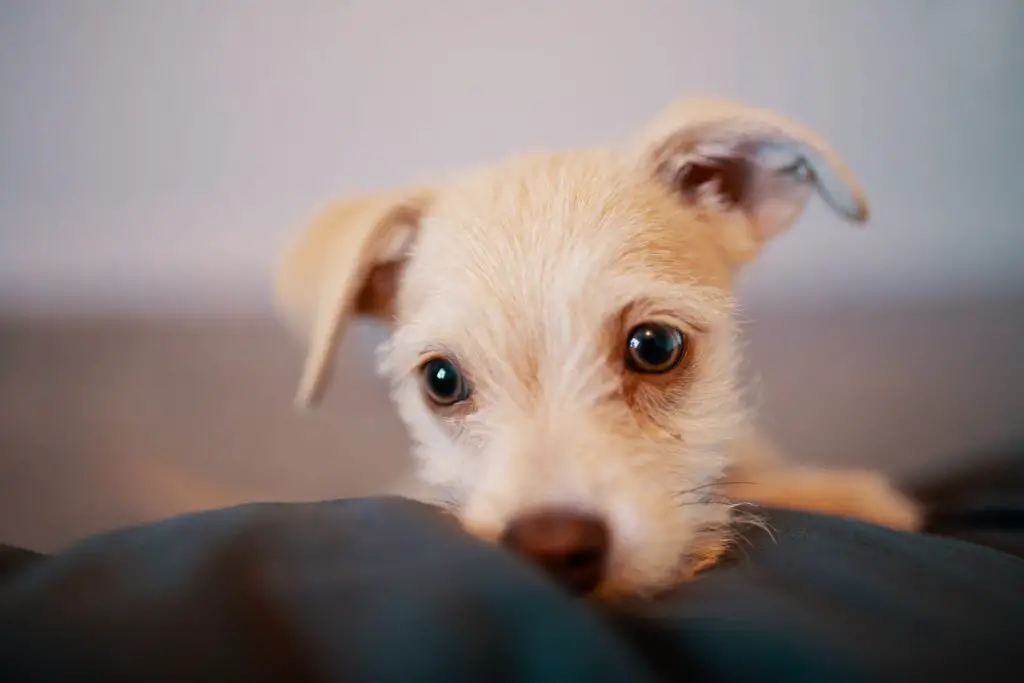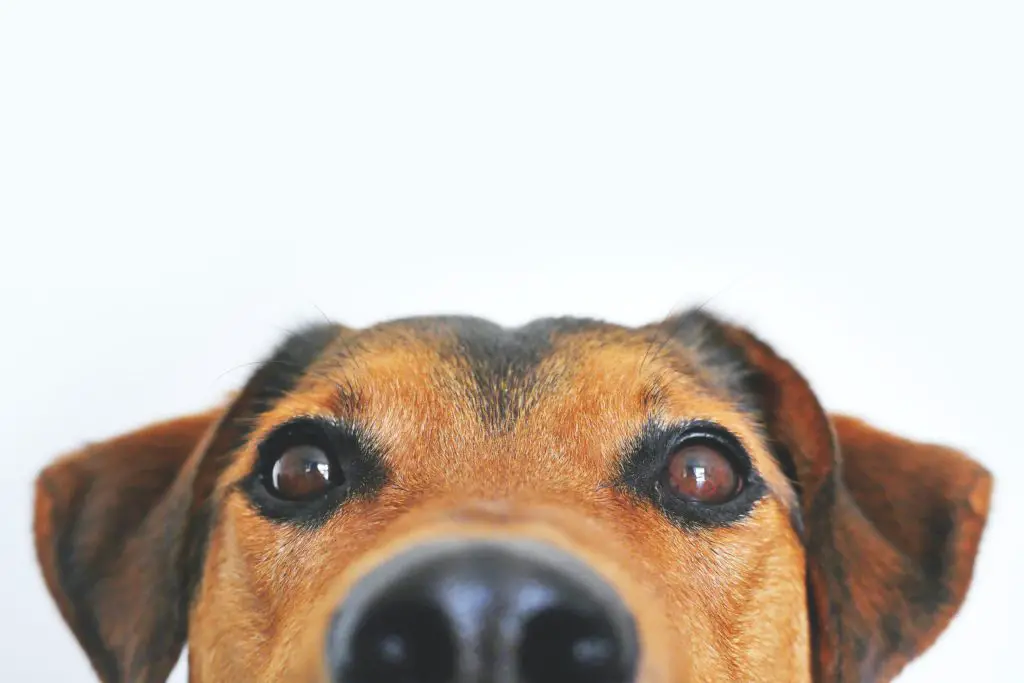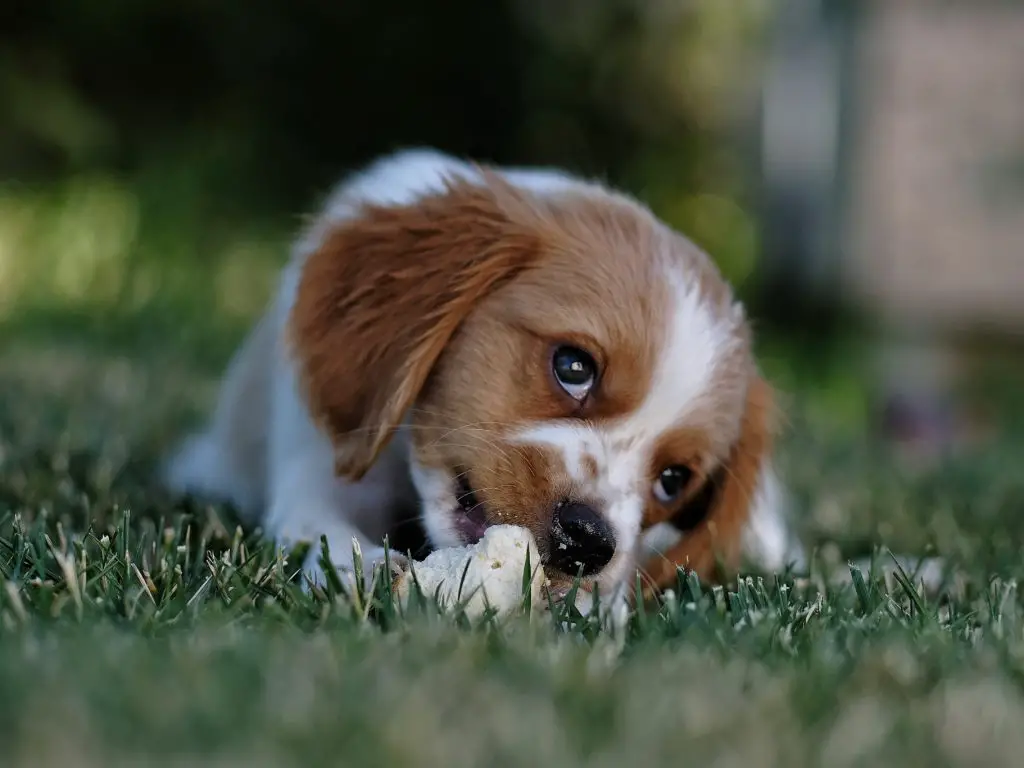Your dog’s eyes have unique features that differ from humans. One is the way they see color, another feature is they have three eyelids, one is to keep their eyes moist and protected. The dog’s eye is similar to yours in the way they develop cataracts and eye issues as they age.
Dog owners may see changes in their dog’s eyes, what do cloudy eyes in dogs mean? It may mean a potential eye issue that needs to be addressed by you and your dog’s veterinarian. Cloudy eyes are often a symptom that could be potentially painful for your dog in addition to changing the way they see the world.
First, it is always best to remain calm and get an eye examination done by your veterinarian. An eye examine can give you a proper diagnosis. Your dog’s cloudy eyes could simple be part of the aging process for your dog or it could be serious.
It’s important to remember that vision problems in dogs are often hereditary. Certain dog breeds can be more susceptible to eye disease and issues. Uneducated breeding is another reason for dogs to experience blindness and hereditary eye disease.
In this article, What Do Cloudy Eyes in Dogs Mean, you will learn about the eight most common eye issues found in dogs, including age related eye problems. Cloudy eyes in dogs is one symptom, however each of the diseases varies in their symptoms, diagnosis, and treatment.
This article is designed as a helpful guide for dog owners. It is not a substitute for professional eye examinations and diagnosis conducted by your dog’s veterinarian.

Related Articles:
What Do Cloudy Eyes in Dogs Mean?
Canine aging, nuclear sclerosis, and canine cataracts are the most common issues related to cloudy eyes in dogs.
- Natural Part of Canine Aging
- Cataracts in Dogs
- Nuclear Sclerosis
- Glaucoma
- Dry Eye
- Ulcers
- Anterior Uveitis in Dogs
- Corneal Dystrophy
Three parts of the eye anatomy that might be familiar to you is the lens, retina, and cornea. The lens in a dog’s eye functions much like a human’s eye lens. One interesting fact is that the lens is made up of water and proteins.
The lens is important as it works similar to a camera by focusing light on the film at the back of the eye, which is called the retina. It is the retina that converts the signals and sends it to the brain for processing and interpretation.
The cornea is the clear dome in front of the dog’s eyes. Cloudy eyes in dogs will typically show up in the cornea area of the eye.
Observe your dog for pawing at their eyes or trying to rub their head on the carpet. Cloudy eyes can show in various tones, such as milky white, grayish, blueish tint or even reddish in appearance.
Cloudy Eyes in Dogs – Natural Canine Aging
As a dog ages the cells in the eye become packed together, as new layers are added. This additional density of cells can give your dog a cloudy eye appearance.
For certain breeds, cloudy eyes in dogs can be a natural sign of aging. Cataracts and nuclear sclerosis are other common eye issues associated with canine aging.
Cloudy Eyes in Dogs – Cataracts in Dogs
In addition to cloudy eyes, your dog’s eyes may also have a white milky appearance which is a result of abnormal lens metabolism. Cataracts can show up in just one eye or both eyes.
What are cataracts in dogs? Cataracts form when proteins begin to clump together, eventually obscuring the lens impairing the dog’s sight. Age, eye trauma, genetics, and metabolic disease can all contribute to cataracts forming in a dog’s eye.
Dog breeds that are genetically susceptible include the Australian Shepherd, Bichon Frise, Boston Terrier, French Bulldog, Poodle, Labrador Retriever and Siberian Husky to name a few familiar breeds.
It is not uncommon to see cataracts in your aging dog.
Related Articles:
- Ultimate Guide: How To Take Care Of A Puppy
- Ultimate Guide: How To Take Care Of A Dog
- Ultimate Guide: How To Take Care Of A Senior Dog
- The Benefits of Owning a Dog
- Top 12 Tips for First Time Dog Owners
Cloudy Eyes in Dogs – Nuclear Sclerosis
Another common reason for cloudy eyes in dogs is nuclear sclerosis. This eye condition is age related in dogs and is considered normal. Changes in the lens of the eye can result in developing a haze within the lens.
Nuclear Sclerosis does not usually result in vision loss or impairment for your dog. The cloudy haze will show up in both eyes equally. This can be confused with cataracts; however, the biggest differences are no vision lost and treatments are not usually necessary.
It is helpful for dog owners to understand that their dog experiences these changes in their eye as they age. The gender and breed of the dog is not usually associated with nuclear sclerosis.
Cloudy Eyes in Dogs – Glaucoma
Cloudy eyes in dogs with glaucoma is painful and can lead to permanent damage and vision loss. Glaucoma occurs when the pressure inside the eye increases. When this pressure is on the optic nerve for too long it can permanently damage the eye structure.
Glaucoma can affect just one or both eyes. However, it often begins in one eye and eventually shows up in the other eye.
Symptoms of glaucoma can include cloudy eyes, squinting, whites of eyes are red and irritated, dilated pupils, bulge to the eye, increase discharge, and or loss of vision. Your dog’s veterinarian or a veterinary ophthalmologist can usually diagnose glaucoma using a tool called a tonometer.
It is important to have a prompt examination by a professional. Two types of glaucoma that could affect your dog are inherited glaucoma and secondary glaucoma. Secondary glaucoma can be a caused by other conditions such as cataracts, a lens luxation where the lens shifts position within the eye, or cancer.
Developing a treatment plan for your dog can relieve the symptoms of glaucoma and make your dog more comfortable.
Related Articles:
- How to Keep Your House from Smelling like Dog
- A Review of the Top 5 Best Brooms For Dog Hair
- A Review of the 4 Best Dog Shampoos for Itchy Skin
Cloudy Eyes in Dogs – Dry Eye
Canines can develop dry eye which occurs when the dog’s body does not produce enough tears. Tears have a similar function in dogs where they are necessary for overall eye health, delivering vital nutrients to the eyes.
When your dog develops dry eye, their eyes become irritated and often cloudy. Chronic dry eye in dogs can leave them with a scarring in the eye, which gives the appearance of a dull cloudy eye.
Additional symptoms of dry eye in dogs include a redness around the whites of the eye, mucous discharge, squinting, excessive blinking, and swelling of the tissue on the surface of the eye. An appointment with your veterinarian is important. Diagnosis includes examining the eye, and possibly a test to measure the moisture in the eye.
Two dog breeds that tend to more genetically susceptible are Pugs and Yorkshire Terriers. Although any dog can develop dry eye as it’s a result form an abnormal reaction of the immune system.
Ulcers can form in the eye when dry eye is left untreated. One common treatment for dry eye includes a tear stimulated medication. The key to making your dog comfortable is consistent daily use of medication.
Cloudy Eyes in Dogs – Ulcers
Ulcers can form in a dog’s eye as a result of dry eye, trauma to the eye, an animal scratch, bacterial infections, inward folding eyelids, and even problematic hairs leaving your dog’s eye with a cloudy appearance.
What are ulcers? They are sores on a dog’s cornea, which is the membrane on the front of the dog’s eye. Symptoms of ulcers can include a haze on the surface of the dog’s eye, reddish or blueish appearance in the eyes.
Ulcers can be painful for your dog causing much discomfort, squinting, and discharge. Make an appointment with your veterinarian for the proper diagnosis. Your veterinarian can prescribe the best treatment based upon examination and ulcer samples. If the ulcer is infected your dog will need an antibiotic.
The cloudy haze will slowly go away after treatment with medicated eye drops. In some cases, surgically removing the ulcer is the only option to alleviate pain and blindness.
Related Articles:
- How to Stop a Dog from Pooping in the House at Night
- A Review Of The Top 5 Best Carpet Cleaner Solutions for Dog Urine
- A Review Of the Top 5 Best Artificial Grasses For Dog Potty
Cloudy Eyes in Dogs – Anterior Uveitis in Dogs
Dogs with anterior uveitis can have a cloudy appearance to their eyes. The uvea, the front of the eye, is the part of the eye that is inflamed. Anterior uveitis is a serious eye condition that if left untreated will lead to vision loss in your dog.
Symptoms of anterior uveitis include excessive tearing, cloudy dull eyes, redness, discharge, or swollen eyeball. It is a painful eye problem for your dog.
After making an appointment with your veterinarian, they can conduct diagnostic tests to figure out why your dog is experiencing this inflammation. Causes could include cancer, metabolic disease, trauma to the eye, autoimmune disease, parasites, fungal or viral infections.
Treatment is based on the reason for the inflammation, and it could include medicated eye drops, ointments and/or oral medications specifically for your dog.
Cloudy Eyes in Dogs – Corneal Dystrophy
One hereditary condition that can cause cloudy eyes in dogs is corneal dystrophy. There are three types of corneal dystrophy, that affect different locations of the eyes.
The three locations affected are the superficial layers of the cornea, the middle layers of the cornea, or the deepest corneal layer. The last one can develop into corneal ulcers in the eye.
Your dog’s veterinarian can diagnosis the corneal dystrophy with a microscope and bright light. Medicated drops may be prescribed for your dog. This eye condition does not go away, however with consistent treatment, your dog should not be uncomfortable.
Treatment for Cloudy Eyes in Dogs
What do cloudy eyes in dogs mean? It could be any of aforementioned eye conditions. After making an appointment for your dog’s eyes to be examined, record when you first noticed the cloudy eyes. Record the date you observed other symptoms such as redness, inflammation, discharge or even your dog in pain.
The treatment for cloudy eyes is based on the reason, the age of your dog, how far it’s developed and if your dog is in pain. Daily check your dog’s eyes for any changes or additional symptoms. A veterinarian is going to be the best choice for finding a proper diagnosis and treatment.

Prevention of Cloudy Eyes in Dogs
It is not always possible to prevent cloudy eyes in dogs. Age, breed, and genetics can be contributors to many of the eye related issues in canines.
One preventive is an annual health examination by your veterinarian that includes an eye examination. As your dog ages, many dog owners chose a twice a year examination for their dog.
Ulcers may be prevented by reducing the possibility of injury to their eyes. Many dog owners use eye protection for certain outdoor activities or even collars that prevent rubbing their eyes.
What do cloudy eyes in dogs mean? You know that it can be several eye related diseases. Routinely exam your dog at home and be aware of any age-related changes in their eyesight.
Please read our Legal Disclaimer



